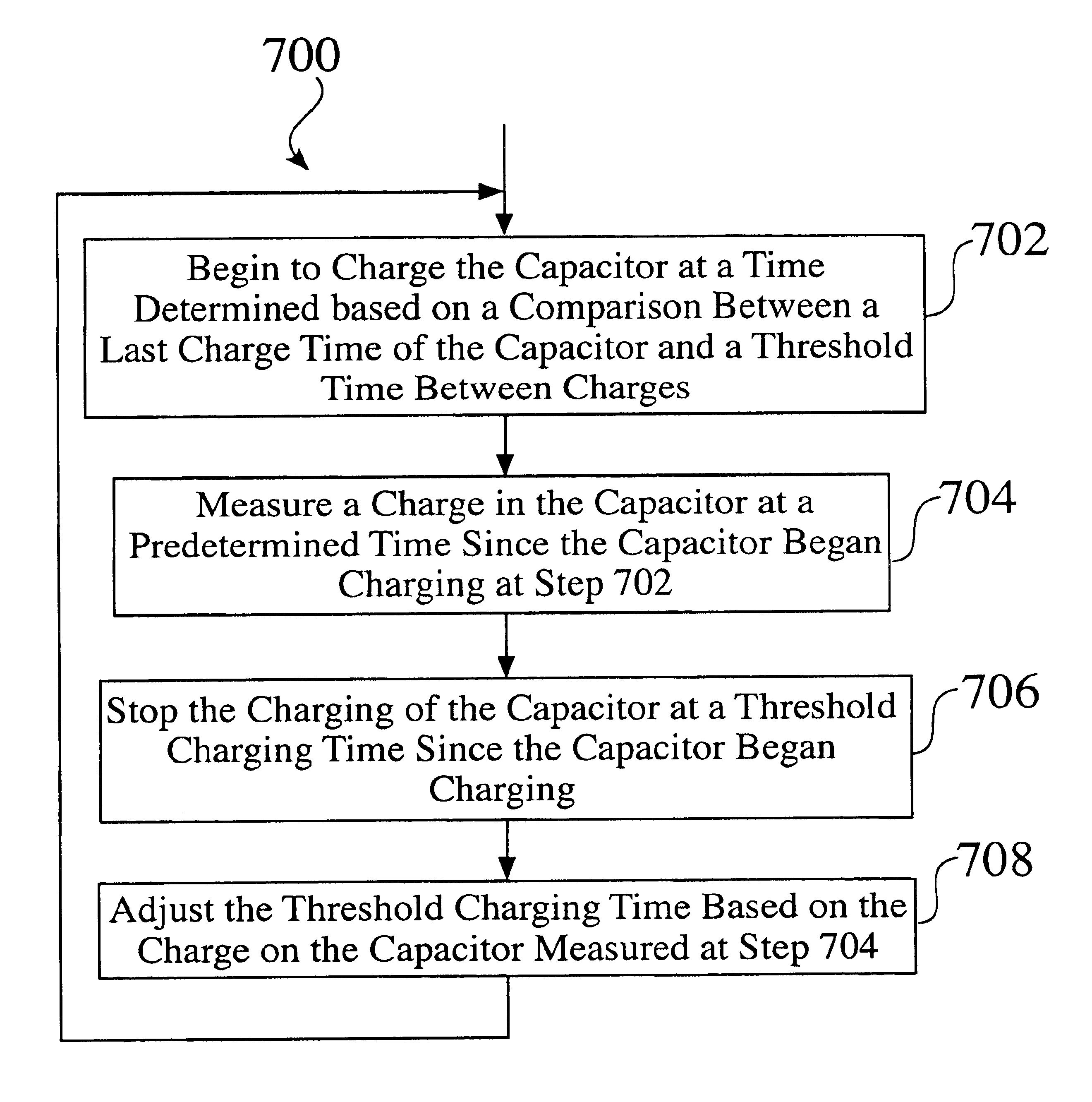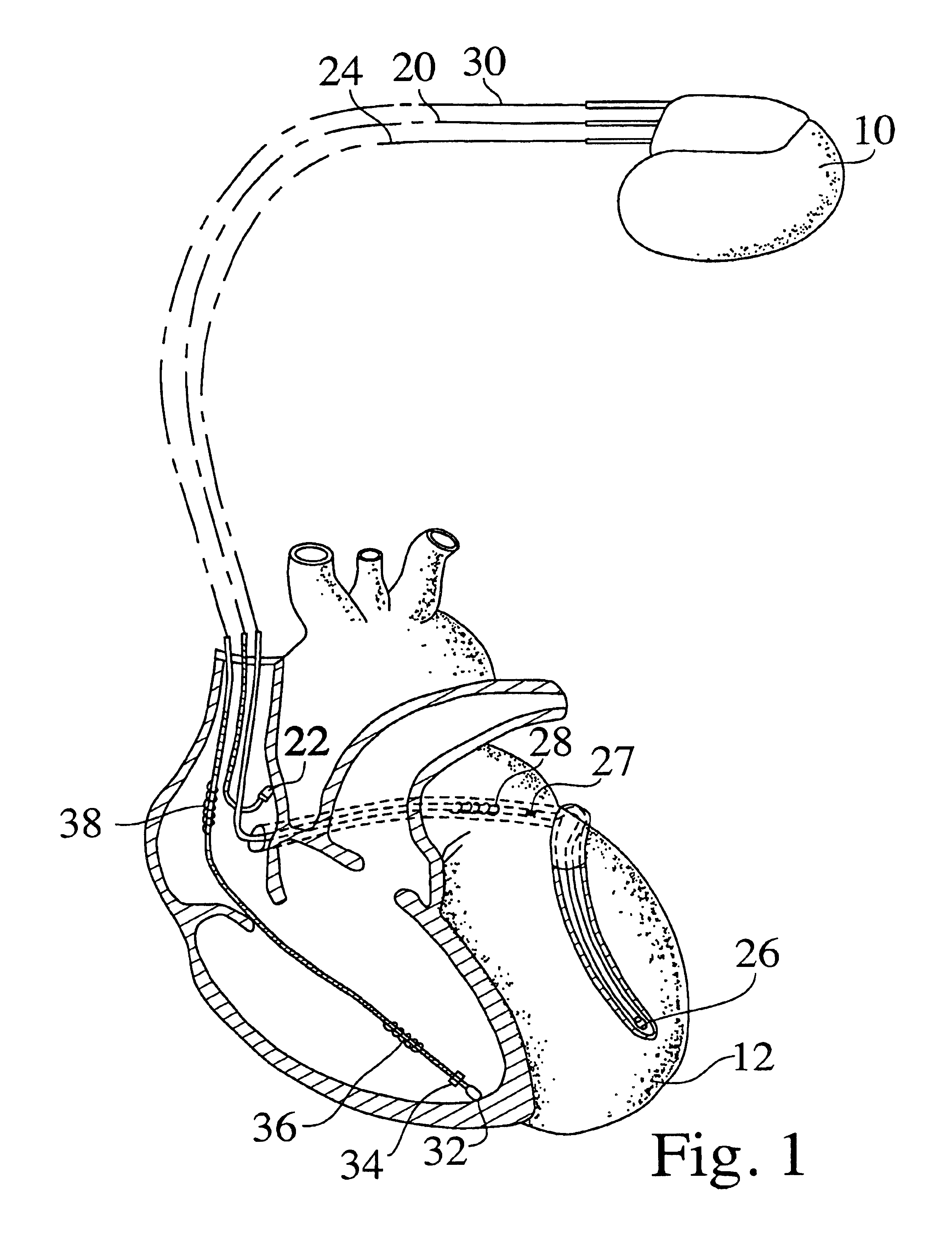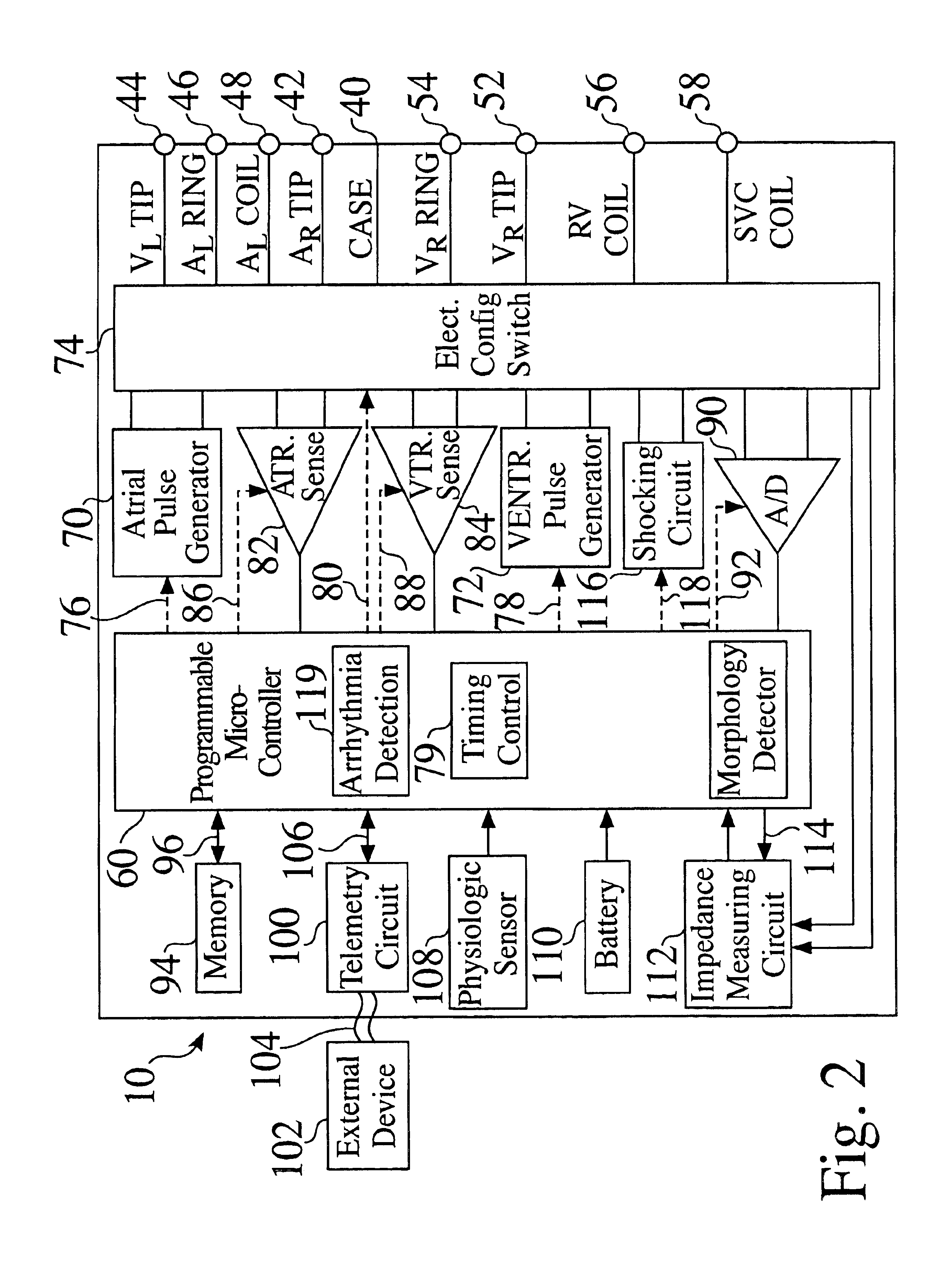Methods and devices for inhibiting battery voltage delays in an implantable cardiac device
a battery and implantable technology, applied in the field of implantable cardiac devices, can solve the problems of affecting the patient's vital therapy, affecting the patient's recovery, and reducing the efficiency of the treatment process,
- Summary
- Abstract
- Description
- Claims
- Application Information
AI Technical Summary
Problems solved by technology
Method used
Image
Examples
Embodiment Construction
FIG. 7 illustrates a flow diagram of a method 700 useful for describing an overview of the operation of embodiments of the present invention. At a first step 702, capacitor 330 begins to be charged at a time determined based on a comparison between a time since a last charge of the capacitor and a threshold time between charges. For example, the charging of the capacitor begins when the time since the last charge of the capacitor equals the threshold time between charges. An exemplary threshold time between charges is about 10 days. If this were the case, capacitor 330 would be charged about three times per month. Preferably, the threshold time between charges is set to be between about 5 days and about 10 days. The less frequent the time between charges and the less energy drawn from battery 110 each time capacitor 330 is charged, the longer the life of battery 110 will last.
At a next step 704, a charge on capacitor 330 is measured at a predetermined time (e.g., 0.5 seconds) since ...
PUM
 Login to View More
Login to View More Abstract
Description
Claims
Application Information
 Login to View More
Login to View More - R&D
- Intellectual Property
- Life Sciences
- Materials
- Tech Scout
- Unparalleled Data Quality
- Higher Quality Content
- 60% Fewer Hallucinations
Browse by: Latest US Patents, China's latest patents, Technical Efficacy Thesaurus, Application Domain, Technology Topic, Popular Technical Reports.
© 2025 PatSnap. All rights reserved.Legal|Privacy policy|Modern Slavery Act Transparency Statement|Sitemap|About US| Contact US: help@patsnap.com



